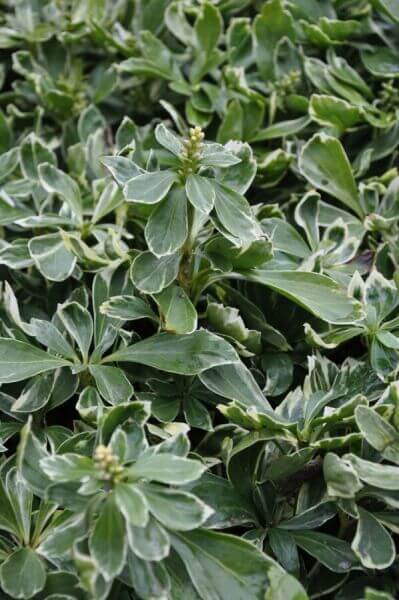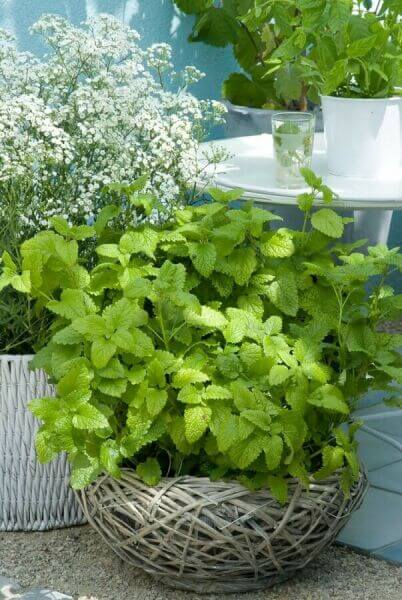Hedge Plants For Seaside Gardens
Hedge Plants For Seaside Gardens
Blog Article
Hedge Plants For Creating Shade
Boost your garden's allure with rich hedge varieties such as Yew (Taxus), Thuja, Laurel, Photinia, and Bamboo, commemorated for their structural stability and environmental advantages.
Yew and Thuja provide evergreen protection and winter strength, while Laurel provides rapid development and broad, fragrant leaves.
Photinia includes seasonal beauty with its vibrant red foliage, and Bamboo provides a low-maintenance, serene ambiance.
These hedges enhance air quality, lower sound, and produce tranquil, personal spaces.
Correct planting, spacing, and upkeep ensure vigorous development and ecological consistency.
Check out how these lush varieties can raise your garden's appeal and well-being.
Secret Takeaways
Change Your Garden With Lush Hedge Ranges
- Select Yew for its dense, evergreen growth and unequaled longevity.
- Choose Laurel for its quick development and broad leaves, ensuring quick personal privacy.
- Select Photinia for its lively seasonal foliage, which turns a striking dark red.
- Utilize Bamboo for a low-maintenance, winter-hardy hedge with aesthetic appeal.
- Space plants 2-3 per meter and prune regularly for ideal development and health.
Popular Hedge Plants
When changing a garden with rich hedge ranges, it's vital to consider popular hedge plants such as Yew, Thuja, Laurel, and Photinia due to their distinct qualities and advantages.
Yew (Taxus) is extremely esteemed for its longevity and dense, green growth, making it a prime choice for enduring landscapes.
Thuja is noted for its evergreen foliage and robust winter resilience.
Photinia includes seasonal vibrancy with red leaves that darken with time, developing vibrant visual appeal.
Laurel provides fast growth and fragrant, broad leaves, perfect for fast personal privacy.
Furthermore, Bamboo is an outstanding choice for ambiance, using a low-maintenance, winter-hardy choice that improves the garden's aesthetic with its elegant, swaying walking canes.
These choices accommodate a range of horticultural requirements and preferences.
Advantages of Garden Hedges
Garden hedges use a wide variety of benefits, making them an important addition to any landscape. These natural barriers are economical to execute and provide considerable wind security, enhancing air blood circulation and contributing to sound reduction. The thick foliage of hedges like Thuja and Beech guarantees personal privacy by obstructing presence, creating a remote and peaceful environment.
Hedges likewise play an essential function in microclimate policy, supplying a stable environment that promotes plant development and minimizes temperature level variations. Their complex leaf structures filter pollutants, enhancing air quality and contributing to a healthier garden environment.
Moreover, hedges excel in sound decrease, absorbing and deflecting sound waves to lower ambient sound levels. This double functionality of offering both acoustic and visual personal privacy enhances the general harmony and visual appeal of any garden.
Planting and Upkeep Tips
For a successful hedge, meticulous preparation of the planting area is crucial. Ensure the soil has appropriate pH and drain to support strong root development.
Space the plants appropriately for the selected species. Water the hedge often throughout its preliminary growth stage, changing as needed with seasonal changes.
Implement a methodical insect control and disease prevention technique, using chemical or organic treatments when required. Regularly examine for aphids, mites, and fungal infections.
Apply mulch to retain moisture and suppress weeds. Seasonal pruning promotes thick growth and air circulation, important for plant health.
Following these guidelines will help you cultivate a lively, well-maintained hedge that boosts the appeal of your garden.
Spacing and Cutting Guidelines
Spacing and Trimming Standards
Correct spacing and trimming are essential for cultivating healthy, visually appealing hedges. Adequate spacing guarantees each plant receives sufficient nutrients, light, and airflow.
Follow these standards for ideal hedge maintenance:
- Spacing: Position hedge plants 2-3 plants per meter to motivate robust development.
- Pruning Methods: Regular pruning is necessary for preserving desired hedge height and shape. Cut new growth in summertime and cut back older wood throughout winter.
- Seasonal Care: Change trimming approaches and schedules according to seasonal requirements to ensure plant health.
- Hedge Height: Frequently screen and cut to preserve the wanted hedge height and accomplish consistent looks.
Adhering to these steps will guarantee your hedge flourishes, boosting both the appeal and functionality of your garden.
Selecting the Right Hedge
Picking the Right Hedge
Selecting the suitable hedge includes evaluating elements such as fully grown height, foliage density, and environmental durability. Effective hedge plant selection requires comprehending each types' development characteristics and site-specific versatility.
For instance, Yew (Taxus) offers excellent longevity and thick development, while Thuja is noteworthy for its winter season resilience. Furthermore, thinking about upkeep requirements is crucial; fast-growing species like Laurel or Privet demand regular trimming, whereas low-maintenance choices like Bamboo or Ivy may be more effective for those seeking minimal upkeep.
Environmental aspects such as soil type, light availability, and moisture conditions must likewise assist the choice procedure. This mindful technique makes sure the picked hedges will grow, providing both practical and visual advantages to the garden landscape.
Shipment and Planting Suggestions
To guarantee your hedge plants prosper, they must be provided by specialized couriers and planted quickly upon arrival.
Follow these important steps for successful planting:
- Soil Preparation: Improve the soil with natural matter to improve drainage and nutrient material.
- Planting Depth: Develop a trench two times the width and equal to the depth of the root ball.
- Watering Techniques: Water completely after planting, keeping the soil consistently moist however not saturated.
- Mulching: Apply a layer of mulch to maintain wetness and reduce weeds.
Customer Assistance and Service
Provided the essential function of timely assistance in horticultural pursuits, our consumer support group is readily available six days a week through telephone, e-mail, and social networks to offer skilled guidance and promptly attend to any concerns. Their commitment to quick action times ensures consumer complete satisfaction by solving inquiries related to plant health, ideal planting approaches, and maintenance schedules.

Within 24 hours
Email
6 days a week
This comprehensive assistance system, enhanced by an outstanding 9.3/ 10 customer ranking, highlights our commitment to boosting the gardening experience for each client.
Regularly Asked Questions
The Length Of Time Does It Consider Hedge Plants to Establish?
Hedge plants usually require one to 3 years to become totally established, with the specific duration differing by species and growing conditions.
Efficient care throughout this vital duration is important for robust development. Consistent watering, alert weed control, and appropriate fertilizer application are essential in promoting strong root development.
For example, fast-growing types like Laurel may establish more rapidly, while slower-growing varieties such as Yew may take longer. Diligent upkeep speeds up the establishment procedure, leading to dense and healthy hedges.
What Are the Finest Hedge Plants for Privacy?
The question of the very best hedge plants for personal privacy involves assessing evergreen and deciduous alternatives.
Evergreen hedges like Thuja, Laurel, and Cypress offer year-round protection, ensuring continuous privacy.
On the other hand, deciduous hedges such as Beech use seasonal personal privacy, shedding leaves in colder months.
Key maintenance ideas for privacy hedges consist of routine cutting, fertilizing in spring, and proper spacing-- typically 2 to 3 plants per meter.
In addition, constant watering and diligent weed removal are crucial for promoting healthy, dense growth.
Can Hedge Plants Attract Wildlife to My Garden?
Yes, hedge plants can attract wildlife to your garden by providing important benefits like shelter, food, and nesting sites, thereby enhancing regional biodiversity. Yew, holly, and laurel are exceptional for bring in birds, while ivy supports a range of bugs.
However, it is necessary to keep in mind that there are some disadvantages, such as increased maintenance to manage pests and routine maintenance. Carefully picking and maintaining hedge ranges can help balance these downsides and benefits, eventually cultivating a dynamic and sustainable ecosystem in your garden.
Are There Any Blooming Hedge Plants Available?
Yes, there are flowering hedge plants available that can improve the appeal of your garden.
For example, Elaeagnus, also understood as Olive Willow, produces aromatic white flowers in the fall, adding a touch of beauty.
Photinia, another popular option, showcases vibrant red leaves that develop into an abundant green, developing a dynamic visual effect throughout the seasons.
To guarantee these plants prosper, it's vital to practice proper pruning methods and seasonal upkeep, such as cutting brand-new development in the summer and cutting back in the winter.
These steps will assist preserve the health and visual appeal of your blooming hedges.
How Do I Avoid Pests in My Hedge Plants?
To prevent pests in hedge plants, employ natural pest control techniques and preserve appropriate hedge care. Present useful pests like ladybugs, which victimize damaging bugs, to develop a well balanced environment.
Frequently check your hedges for indications of problem and without delay remove any affected parts to avoid the spread. Ensure the health of your hedges by applying well balanced fertilizers and supplying appropriate water.
Use mulching to keep soil moisture and proper spacing to reduce plant tension and promote robust development. These practices jointly help in reducing pest issues and keeping a healthy hedge.
Conclusion
In essence, picking the best hedge varieties such as Yew, Thuja, and Laurel can transform any garden into a tranquil sanctuary. These plants offer year-round greenery, boost visual appeal, and offer practical advantages like noise reduction and wind defense.
Appropriate planting techniques, precise spacing, constant watering, and seasonal trimming are essential for ideal growth.
Dependable shipment services and professional customer assistance guarantee a smooth experience from purchase to planting, making it easier than ever to elevate your outside space.
Garden hedges use a wide range of benefits, making them an important addition to any landscape. These natural website barriers are affordable to carry out and offer substantial wind security, boosting air flow and contributing to sound reduction. The thick foliage of hedges like Thuja and Beech ensures personal privacy by obstructing exposure, developing a secluded and peaceful environment.

Pruning Methods: Regular pruning is essential for keeping preferred hedge height and shape. Trim brand-new development in summertime and cut back older wood during winter season.
Report this page